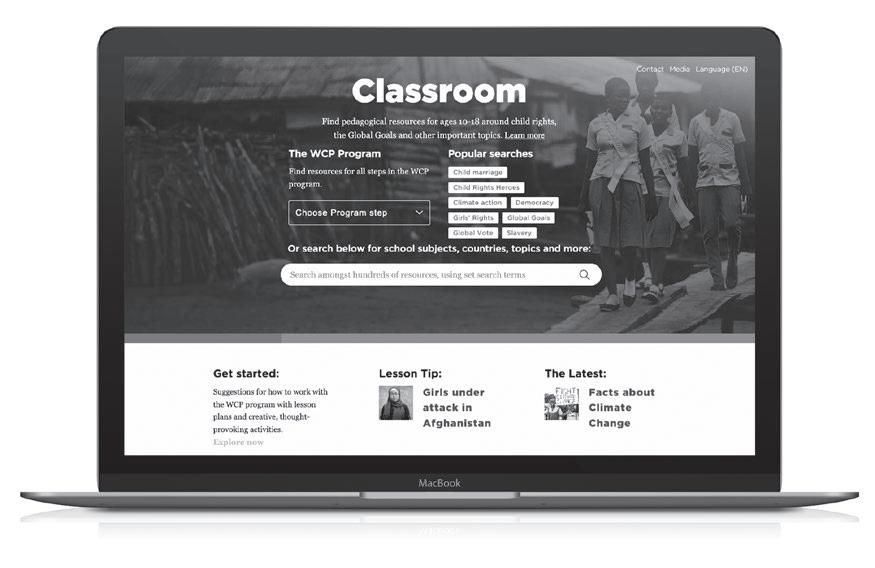
2 minute read
How to use The Globe
You have received The Globe magazine, which is used by all children and teachers taking part in the WCP Program. The texts in The Globe teach your students about the rights of all children, and about how to carry out their own Global Vote and get involved in choosing the recipient of the World’s Children’s Prize.
Reading the stories in The Globe will give them the chance to experience the lives of other children, and find out how the Child Rights Heroes fight for a better life for children. All students need to be given enough time to read The Globe and think about the stories.
Enough copies for everyone?
You haven’t been given one copy of The Globe per student, so it will have to be shared. If several classes are taking part, you may need to use the same copy of The Globe across those classes. For example, you can:
• Decide to read extracts from The Globe out loud to the whole class, and give the children time to respond after each text.
• Divide the students up into as many groups as there are copies of The Globe, and let them take it in turns to read out loud to one another.
After each text, the group discusses what they have read.
• Keep a register to record which student has borrowed their group’s copy of The Globe to take home.
• Draw up a plan with other teachers to make sure all classes have enough time to work with The Globe before your Changemaker Day and Global Vote.
Bring The Globe home
Students like to borrow The Globe to take home with them, so they can study and read it out to their siblings, parents and grandparents, and maybe even friends and neighbours. The Globe has taught many parents that children have rights, and that girls share the same rights as boys. The student becomes a changemaker for children’s rights in their own family, through The Globe and the WCP Program.
Learning through stories
Stories in The Globe allow the readers to experience other children’s lives and challenges. You will also find the life stories of brave Child Rights Heroes and Child Rights Ambassadors. These include stories as well as facts on, for example, girls’ equal rights and girls’ lives, and climate change and how it affects children.
Look For The Symbol
The symbol marks learning activities that can be used alongside the stories in The Globe .
Fair Share
In the WCP Program, it is important that the students get to talk about different issues in small groups. Use this method to make sure everyone gets a chance to participate. This is a great way of practising democratic dialogue!
1. Work in groups of four, sitting in a circle. Make sure that all participants can see each other as they take turns to talk and listen, one at a time.
2. Each participant is given a number of markers, such as pieces of paper in different colours, or small rocks.
3. Pick a question to discuss. Explain that when a person wants to speak they must place one of their markers in the centre of the circle. No-one may speak apart from the person who has just placed their marker in the centre. A contribution may be long or short, for example agreeing with the previous speaker and explaining why. No-one else may speak while they are speaking.
4. You can only place a second marker in the centre once everyone has spoken.
5. Continue until everyone has used up all their markers or until time is up.










